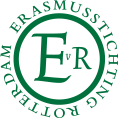Poet
Kedarnath Singh

Kedarnath Singh
(India, 1934)
Biography
Born in 1934, Kedarnath Singh is widely acknowledged as one of the major writers of contemporary Hindi poetry. Subtle, understated, economical, nuanced and allusive, Singh’s poetry has been associated with the New Poetry and Progressive Writers’ Movements in Hindi. His work has been described as ‘polyvocal’ and ‘dialogic’, surcharged with a folk and mythic consciousness, capable of evoking ‘the silent mysterious and magical presence of everyday realities’.
Singh’s early years in rural India endowed his poetry with an enduring legacy of folkloric tropes and images for which his poetry is well known. In the cultural hub of Benaras, he was associated with the Progressive Writers’ Movement. These years marked the formative influence of writers like Hazariprasad Dwivedi, Prof Namawar Singh and Trilochan Shastri. He also counts writers like Paul Eluard, Neruda and Brecht as important forces in shaping his growth as a craft-conscious, experimental and humanist poet. “Parallel to the urban tradition of New Poetry,” writes poet Anamika, “Singh raised a poetic structure that had a beautiful blend of both the rural and urban sensibilities.”
Deeply imbued by the diction and cadences of his local dialect of Bhojpuri, Singh has fashioned a distinctive poetry that embodies a moral vision without overt didacticism (proceeding, as he puts it, “from perception towards conception”); that skilfully draws on the resources of metaphor without being enslaved by it (“I have weaned myself away from this infatuation with images”); that is accessible without being facile, and deeply local without being provincial (“The locale I portray – my basti – is not limited to a region”).
Singh believes his poetry strives to embody “an Indian dimension” and is deeply conscious of his “linguistic roots”. In an essay entitled “Modernity in Hindi Poetry”, he points out that Hindi modernity (a term he uses as distinct from modernism) has entailed a modernisation of language and sensibility, but without a passive imitation of western literary paradigms.
His own ‘modernity’, he acknowledges, is rooted in the scientific and technological advancements of his time, but also has to contend with Lalmohar, the man in his village “whose stone-blind illiteracy and ignorance makes my whole modernity ironic”. His modernity also has to contend with the roiling contradictions of modern-day India – its great tradition of humanism and tolerance as well as its disturbing legacy of casteism, communal tension, religiosity and environmental degradation. And finally, his modernity also has to negotiate that inner tension between his rural and urban identities: “This tension is a well-known fact of our everyday life but it rarely draws our critical attention. For me this experience constitutes an aesthetic perception and on a deeper level, it forms an indispensable part of my moral consciousness.”
Singh holds that his modernity “enters its time through its place”, a quality that gives it a certain regional authenticity: “When I dive deep in my memory, I find a frame of reference already present there. My primary school in the village did not have a clock . . . And our time-keepers were the midday (dupahariya) flowers . . . The relationship between midday and these blooms struck us as a miracle and it seemed as if these little blooms themselves created midday.”
Thus the perennially fraught questions of context and contemporaneity, Singh points out, are sometimes seamlessly resolved in poetry: “Would you believe/ that in today’s sun/ is the warmth of a Saturday of the next century?/ Right now/ all our city plants/ are taking their sustenance/ from the green manure/ buried deep in the eighth century earth . . .”
The poems presented in this edition are culled from three of Singh’s books. The translations are by Alok Bhalla, well-known translator and scholar. Also included is an interview with Singh by noted poet, E.V. Ramakrishnan.
© Arundhathi Subramaniam
Also on this site{id="2684" title="Cranes in the Drought"}
An interview with Kedarnath Singh conducted by E.V. Ramakrishnan.
Bibliography
In Hindi:
Abhi Bilkul Abhi. Natya Sahitya Prakashan, Allahabad, 1960.
Zameen Pak Rahi Hai. Prakashan Sansthan, Delhi, 1980.
Yahan Se Dekho. Radhakrishan Prakashan, Delhi, 1983.
Pratinidhi Kavitayen’. Rajkamal Prakashan, Delhi, 1985.
Akal Mein Saras. Rajkamal Prakashan, Delhi 1988.
Uttar Kabir aur Anya Kavitayen. Rajkamal Prakashan, Delhi, 1995.
Bagh. Bharatiya Jnanpith, Delhi, 1996.
Websites featuring Singh
In English:
The South Asian Literary Recordings Project
Kedarnath Singh, Hindi Writer: (Library of Congress) (Bio-note and readings)
Foundation of SAARC Writers and Literature
‘Cranes in the Drought’ (English translation of Kedarnath Singh’s ‘Akal Mein Saras’ by E. V. Ramakrishnan)
Abebooks
About Kedarnath Singh’s book, Cranes in the Drought.
In Dutch:
Poetry International Festival
Kedarnath Singh (Hindi poet): bio note; 33rd Poetry International Festival, Rotterdam, 2003.
Poems
Poems of Kedarnath Singh
Sponsors
























